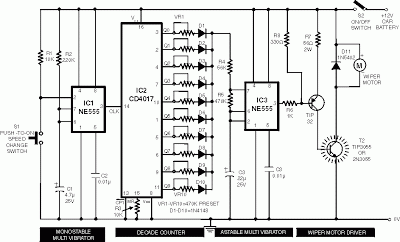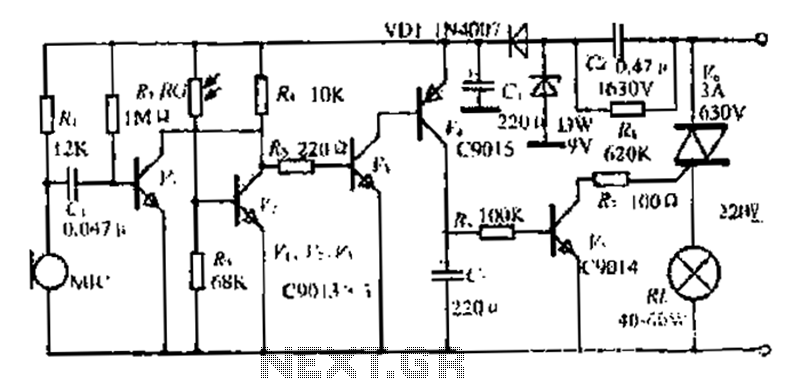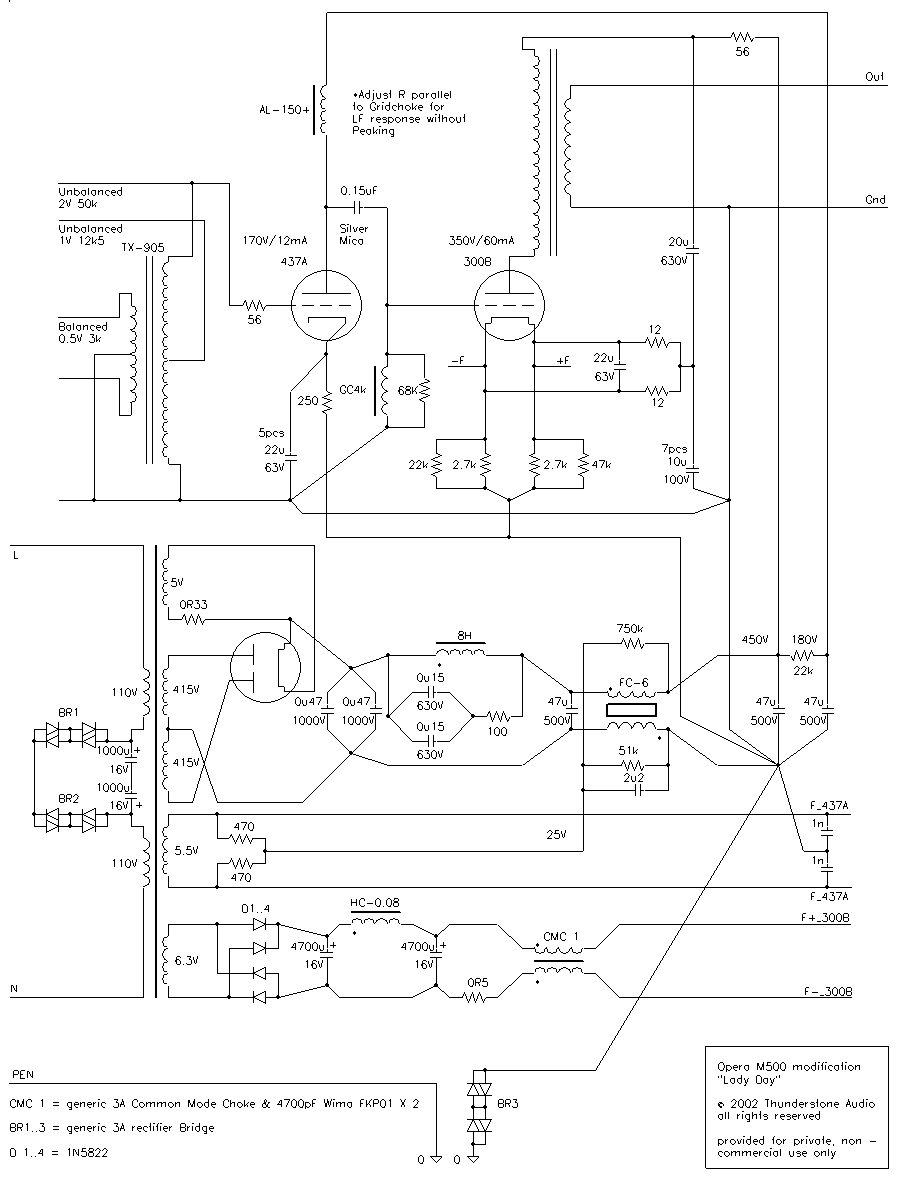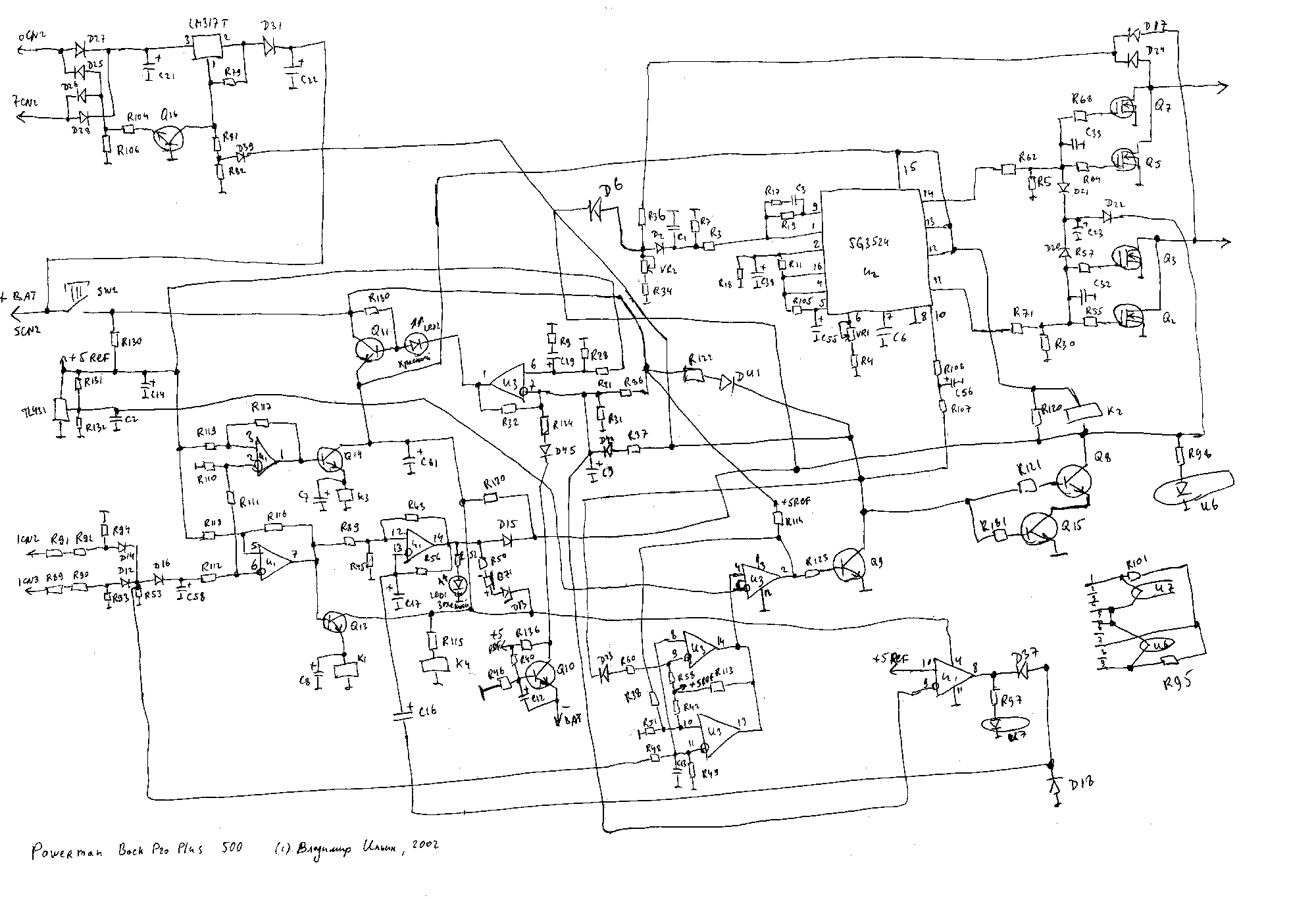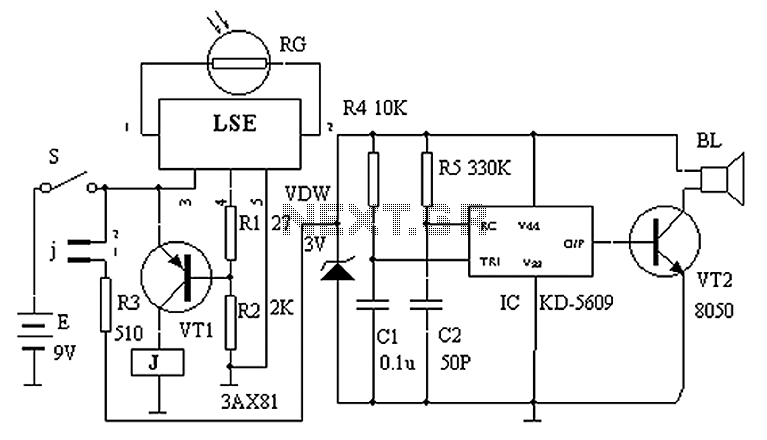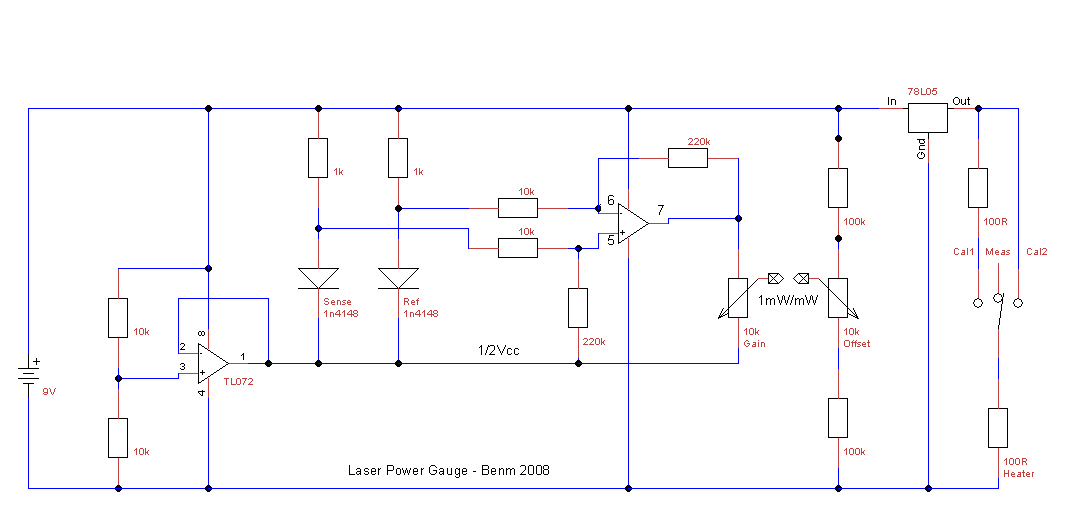
0-30V Stabilized Variable Power Supply with Current Control
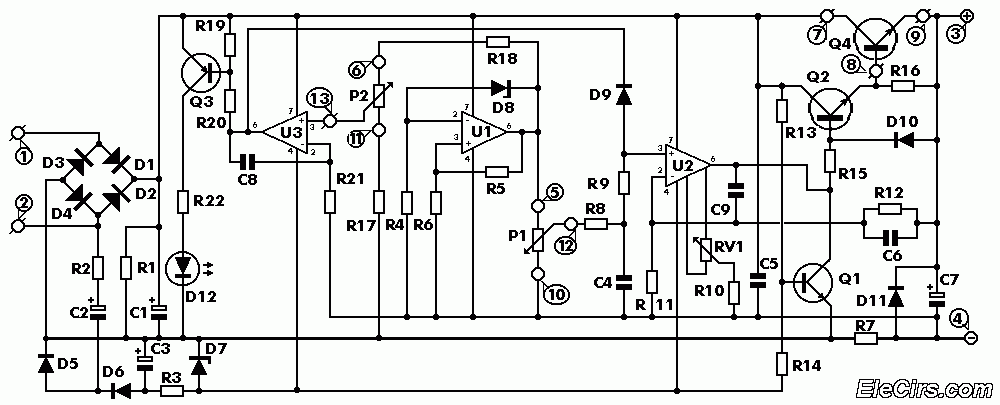
This is a high-quality stabilized power supply circuit diagram. The output voltage can be adjusted from 0 volts to 30 volts DC, and the current output value can be adjusted from 0.002 A to 3 A. The circuit begins with a step-down mains transformer with a secondary winding rated at 24 V/3 A, connected across the input points at pins 1 and 2. The quality of the output supply will be directly proportional to the quality of the transformer. The AC voltage from the transformer’s secondary winding is rectified by a bridge formed by four diodes (D1-D4). The DC voltage obtained across the bridge output is smoothed by a filter consisting of the reservoir capacitor (C1) and resistor (R1). The circuit features unique characteristics that differentiate it from other power supplies in its class. Instead of employing a variable feedback arrangement to control the output voltage, this circuit utilizes a constant gain amplifier to provide the necessary reference voltage for stable operation. The reference voltage is generated at the output of U1. The operation of the circuit is as follows: Diode D8, a 5.6 V zener, operates at its zero temperature coefficient current. The voltage at the output of U1 gradually increases until D8 is turned on, stabilizing the circuit and producing the Zener reference voltage (5.6 V) across resistor R5. The current flowing through the non-inverting input of the op-amp is negligible, resulting in the same current flowing through R5 and R6. Since both resistors have equal values, the voltage across the two in series will be exactly twice the voltage across each one, yielding an output voltage of 11.2 V at pin 6 of U1. The integrated circuit U2 has a constant amplification factor of approximately 3X, as determined by the formula A = (R11 + R12)/R11, which raises the 11.2 V reference voltage to approximately 33 V. The trimmer (RV1) and resistor (R10) are used to adjust the output voltage limits, allowing it to be reduced to 0 V, regardless of component tolerances in the circuit.
The power supply circuit described is designed to provide a reliable and adjustable output voltage and current, making it suitable for various applications. The step-down transformer is a critical component, as it ensures that the voltage is safely reduced from mains levels to usable low voltage levels. The rectification process, achieved through the diode bridge, converts the AC voltage from the transformer into DC voltage. The smoothing filter, consisting of the capacitor and resistor, plays a vital role in eliminating ripple voltage, ensuring a stable DC output.
The unique approach of using a constant gain amplifier for voltage regulation enhances the stability and precision of the power supply. The Zener diode serves as a reference voltage source, ensuring that fluctuations in the output are minimized. The configuration of resistors R5 and R6, along with the operational amplifier, facilitates a predictable and stable output voltage that is easily adjustable. The amplification stage provided by U2 further increases the voltage to the required levels, while the adjustment components (RV1 and R10) ensure that the output can be finely tuned to meet specific requirements.
This power supply circuit is ideal for laboratory use, testing, and other applications where adjustable DC voltage and current are necessary. The design emphasizes stability, precision, and versatility, making it a valuable addition to any electronics workbench.This is high quality stabilized power supply circuit diagram. You will able to adjust the output voltage from 0 volt up to 30 volt DC. You also able to adjust the current output value from 0. 002 A to 3 A. To start with, there is a step-down mains transformer with a secondary winding rated at 24 V/3 A, which is connected across the input points of the circuit at pins 1 & 2. (the quality of the supplies output will be directly proportional to the quality of the transformer). The AC voltage of the transformers secondary winding is rectified by the bridge formed by the four diodes D1-D4.
The DC voltage taken across the output of the bridge is smoothed by the filter formed by the reservoir capacitor C1 and the resistor R1. The circuit incorporates some unique features which make it quite different from other power supplies of its class.
Instead of using a variable feedback arrangement to control the output voltage, our circuit uses a constant gain amplifier to provide the reference voltage necessary for its stable operation. The reference voltage is generated at the output of U1. The circuit operates as follows: The diode D8 is a 5. 6 V zener, which here operates at its zero temperature coefficient current. The voltage in the output of U1 gradually increases till the diode D8 is turned on. When this happens the circuit stabilises and the Zener reference voltage (5. 6 V) appears across the resistor R5. The current which flows through the non inverting input of the op-amp is negligible, therefore the same current flows through R5 and R6, and as the two resistors have the same value the voltage across the two of them in series will be exactly twice the voltage across each one.
Thus the voltage present at the output of the op-amp (pin 6 of U1) is 11. 2 V, twice the zeners reference voltage. The integrated circuit U2 has a constant amplification factor of approximately 3 X, according to the formula A=(R11+R12)/R11, and raises the 11. 2 V reference voltage to approximately 33 V. The trimmer RV1 and the resistor R10 are used for the adjustment of the output voltages limits so that it can be reduced to 0 V, despite any value tolerances of the other components in the circuit.
🔗 External reference
The power supply circuit described is designed to provide a reliable and adjustable output voltage and current, making it suitable for various applications. The step-down transformer is a critical component, as it ensures that the voltage is safely reduced from mains levels to usable low voltage levels. The rectification process, achieved through the diode bridge, converts the AC voltage from the transformer into DC voltage. The smoothing filter, consisting of the capacitor and resistor, plays a vital role in eliminating ripple voltage, ensuring a stable DC output.
The unique approach of using a constant gain amplifier for voltage regulation enhances the stability and precision of the power supply. The Zener diode serves as a reference voltage source, ensuring that fluctuations in the output are minimized. The configuration of resistors R5 and R6, along with the operational amplifier, facilitates a predictable and stable output voltage that is easily adjustable. The amplification stage provided by U2 further increases the voltage to the required levels, while the adjustment components (RV1 and R10) ensure that the output can be finely tuned to meet specific requirements.
This power supply circuit is ideal for laboratory use, testing, and other applications where adjustable DC voltage and current are necessary. The design emphasizes stability, precision, and versatility, making it a valuable addition to any electronics workbench.This is high quality stabilized power supply circuit diagram. You will able to adjust the output voltage from 0 volt up to 30 volt DC. You also able to adjust the current output value from 0. 002 A to 3 A. To start with, there is a step-down mains transformer with a secondary winding rated at 24 V/3 A, which is connected across the input points of the circuit at pins 1 & 2. (the quality of the supplies output will be directly proportional to the quality of the transformer). The AC voltage of the transformers secondary winding is rectified by the bridge formed by the four diodes D1-D4.
The DC voltage taken across the output of the bridge is smoothed by the filter formed by the reservoir capacitor C1 and the resistor R1. The circuit incorporates some unique features which make it quite different from other power supplies of its class.
Instead of using a variable feedback arrangement to control the output voltage, our circuit uses a constant gain amplifier to provide the reference voltage necessary for its stable operation. The reference voltage is generated at the output of U1. The circuit operates as follows: The diode D8 is a 5. 6 V zener, which here operates at its zero temperature coefficient current. The voltage in the output of U1 gradually increases till the diode D8 is turned on. When this happens the circuit stabilises and the Zener reference voltage (5. 6 V) appears across the resistor R5. The current which flows through the non inverting input of the op-amp is negligible, therefore the same current flows through R5 and R6, and as the two resistors have the same value the voltage across the two of them in series will be exactly twice the voltage across each one.
Thus the voltage present at the output of the op-amp (pin 6 of U1) is 11. 2 V, twice the zeners reference voltage. The integrated circuit U2 has a constant amplification factor of approximately 3 X, according to the formula A=(R11+R12)/R11, and raises the 11. 2 V reference voltage to approximately 33 V. The trimmer RV1 and the resistor R10 are used for the adjustment of the output voltages limits so that it can be reduced to 0 V, despite any value tolerances of the other components in the circuit.
🔗 External reference
